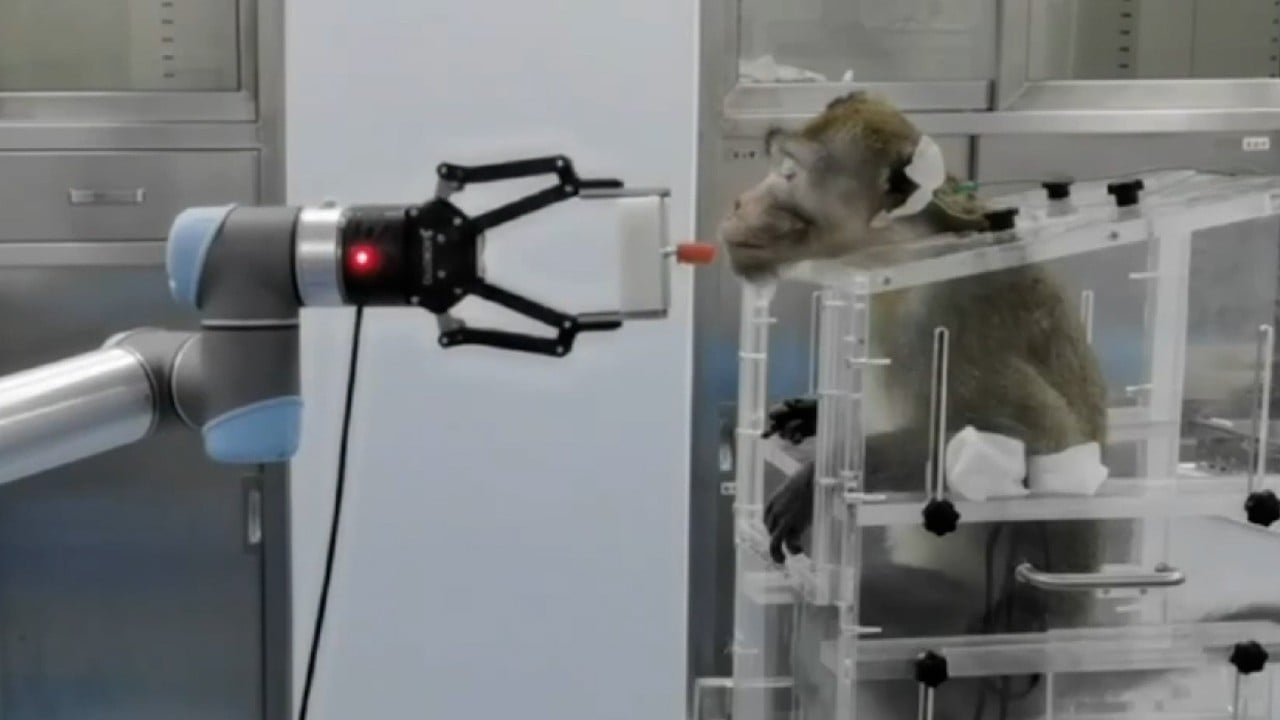
Stars and fish brains: how Chinese researchers are getting closer to mind-controlled computers
- Astronomy-inspired technology processes neural signals in zebrafish that could be used to control external devices
- System may lead researchers to develop more efficient optical brain-controlled interfaces such as virtual reality
Scientists in China have harnessed the observation techniques of astronomers to scrutinise another object of mystery much closer to home – fish brains.
For the first time, researchers have scanned the neural pathways of zebrafish, a freshwater fish from the minnow family, to produce an imaging analysis of up to a hundred thousand neurons.
Chinese team captures fish’s ‘thoughts’ as it goes in for the kill
“It generates feedback signals by continuously monitoring the activities of the zebrafish brain’s entire network of neurons with a feedback delay of less than 70.5 milliseconds, and it can handle data streams up to 500 megabytes per second,” a statement on the Chinese Academy of Sciences (CAS) website said on Wednesday.
“This advancement may lead researchers to develop more efficient optical brain-computer interface technologies in the future,” the statement said, adding that the research method qualified for a patent called “Optical Brain-Computer Interface System and Methods”.
The study was published in Nature Neuroscience on March 11 by brain scientists Mu Yu and Du Jiulin, from the Centre for Excellence in Brain Science and Intelligence Technology at CAS, and algorithm specialist Hao Jie, from the Institute of Automation at CAS.
Zebrafish helps push the frontiers of research
The human brain is made up of hundreds of different types of neurons – nearly 100 billion in total – while the universe comprises about 200 billion known galaxies, interconnected in a network similar to the structure of the brain. The structural resemblance has prompted theoretical speculation that the universe is much like a vast human brain.
Scientists know that human perception, learning, memory and emotions involve the collaboration of multiple regions of the brain. Extracting information from neurons is akin to finding patterns in the vast expanse of the galaxy. But the ability to process such huge amounts of data remains a significant challenge.
China’s FAST telescope deepens mystery over cosmic blasts
However, scientists have been able to speed up the research by pinpointing FRBs in vast amounts of astronomical data with the help of computer learning powered by graphics processing units.
Inspired by this technology, the Chinese researchers created a way to process neural signals in zebrafish. The system collects signals from optical sensors and sends them to a computer system in real-time. The system is fast – able to analyse complex signals, decode them and produce responses that allow the brain to act like a light-controlled switch that could theoretically control external devices.
Using this system, the researchers said they aim to identify characteristics of neural activity that could be suitable for optical BCI and reveal their mechanisms, which would eventually lead to more efficient optical BCI technologies.


